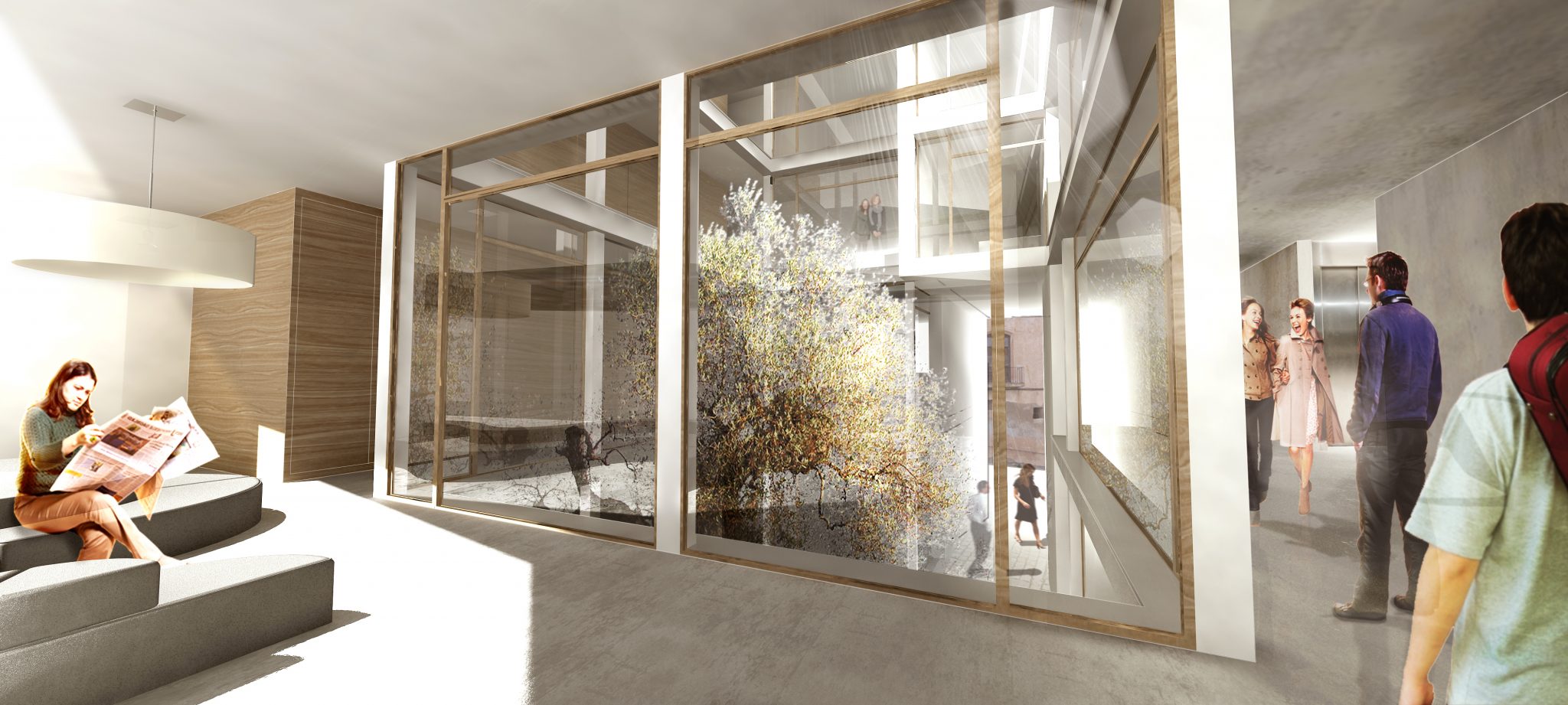
Vinebre, Tarragona – Spain
The commission proposes the construction of an agricultural training school in an agricultural town in the interior of Catalonia and an attached student residence to accommodate participants in different courses and activities, as well as families and other users outside the academic period . It is proposed to place the school’s own program (laboratories, classrooms, cultural dissemination spaces, library, a shop of local products and an exhibition space) in a stately home of the eighteenth century, currently abandoned, and build on an empty lot in front of the accommodation.
The intervention in the historic building has as its main objective to consolidate and repair the existing and adapt it to the new use, maintaining and enhancing the most characteristic features of this architecture, clearly marking what is added and what was already there. With this idea the program is distributed, placing in the basement and ground floor, in the old storage and livestock spaces, two classrooms for workshops, the store, a conference room and the exhibition area in the oil and wine warehouse , where there are large silos of a single piece of carved stone of both sculptural and historical value. The configuration of the plant allows that the commercial space and the exhibition can operate autonomously to the rest of the school, facilitating its opening on weekends and out of class time. In the noble floor the whole program of classrooms and area for teachers is developed and finally in the open space under cover, the library. The core of vertical communications and services is placed in two of the interior bays, where previously there were secondary rooms, of small size and architectural interest. The wrapping, the beams with wooden beams and the roof are the structural elements where consolidation and rehabilitation work is centered. The slabs are replaced by structural panels of pre-formed spruce wood in the workshop. The roof is made new, it is raised a few centimeters so that the free height is more comfortable, the light is covered with dozens of contralaminated wood and sandwich panel with an exterior coating of zinc sheet, by which the issue of drainage is also solved. Rainwater. In strategic points skylights appear to allow the entrance of light to interior points of the plant.
The land between medians is separated from the school by the main street. It is a void within the consolidated plot of the historic center of the town, has a north-south orientation and access to different levels at both ends. The volume of the new building is aligned to the facades of the existing existing buildings, settling to create a widening in the narrow street pointing to the entrance. The program is developed around an inner courtyard: rooms and living areas for users on the upper floors giving the public roads, study and administration room on the ground floor with access and dining room and games rooms on the lower level with Access through the back street. Cross views are generated through the patio, within the same building and transparencies from street to street.
The compositional scheme of the structure of metal frames and that of the interior partitions follow the lines of the cadastral plot, which has been studied, are determined by those of the Roman, which was implanted in the area during the occupation of the peninsula.
The facades are solved using the typical elements of the architecture of the region: holes on the enclosed walls revoked and painted white, with solar radiation control mechanisms, in our case blinds in accordion with adjustable wooden slats.
The rooms are designed so that they can be used flexibly. Unlike the rest of the building where ceramic floors are proposed, the rooms have wooden floors and custom furniture in the same material.